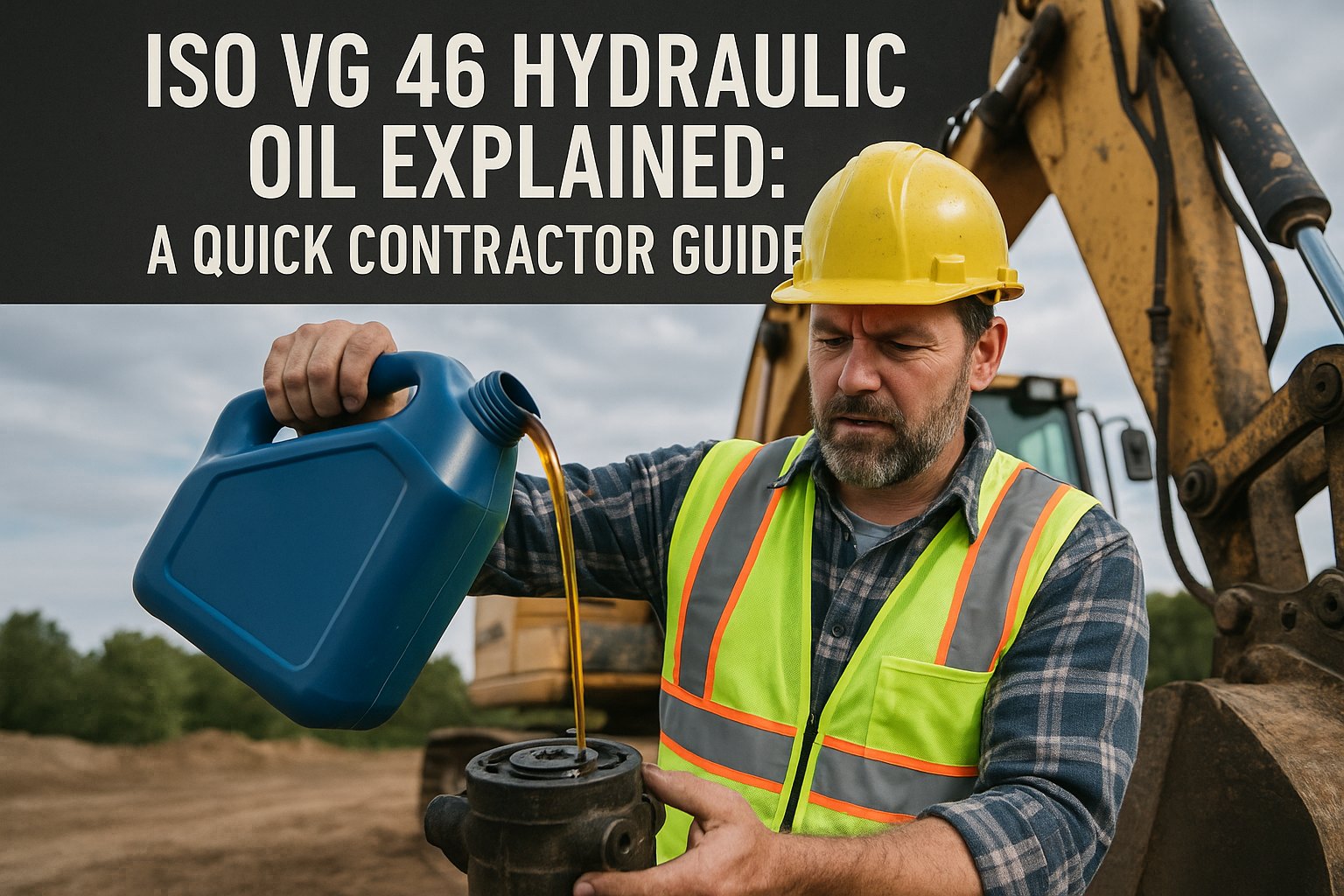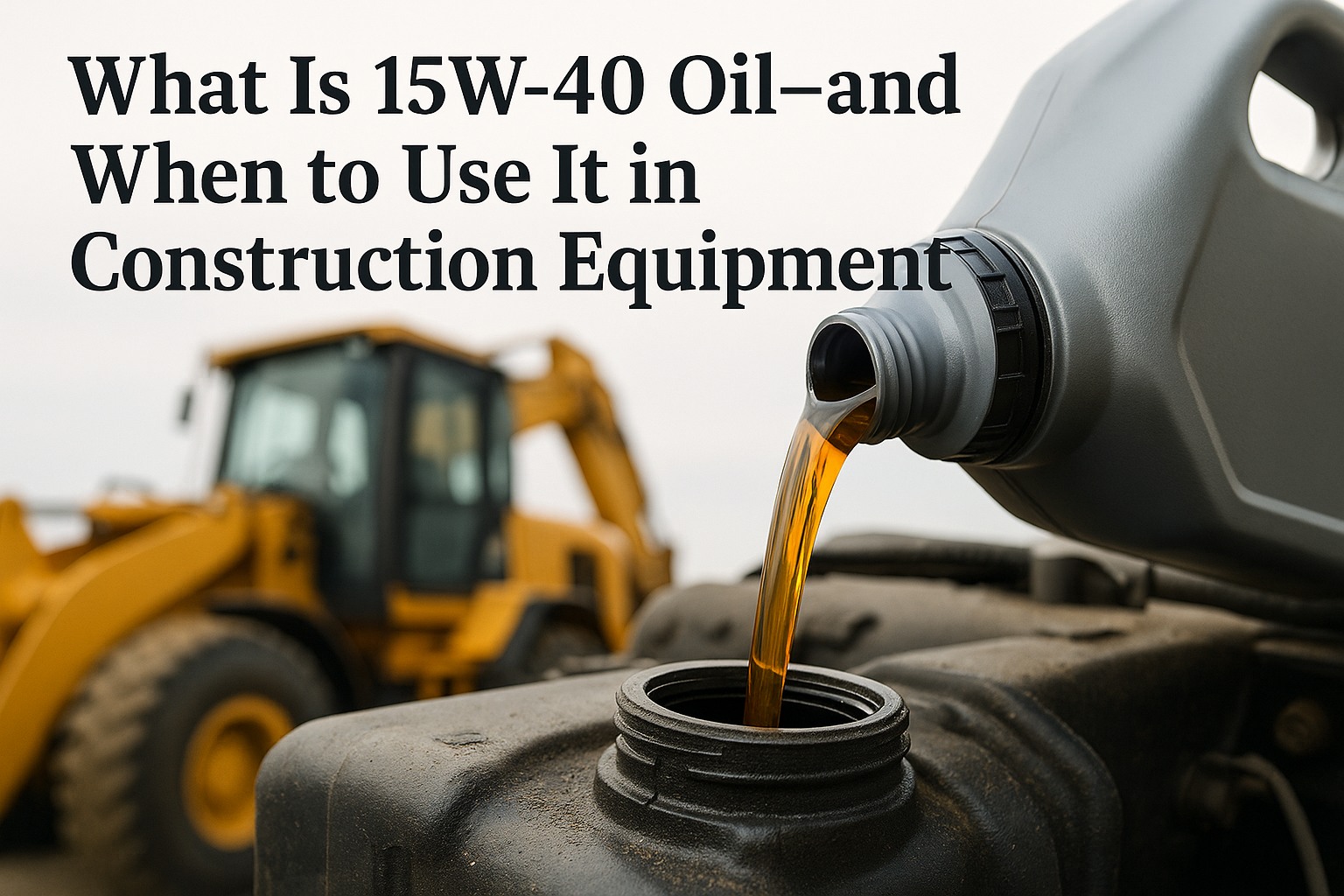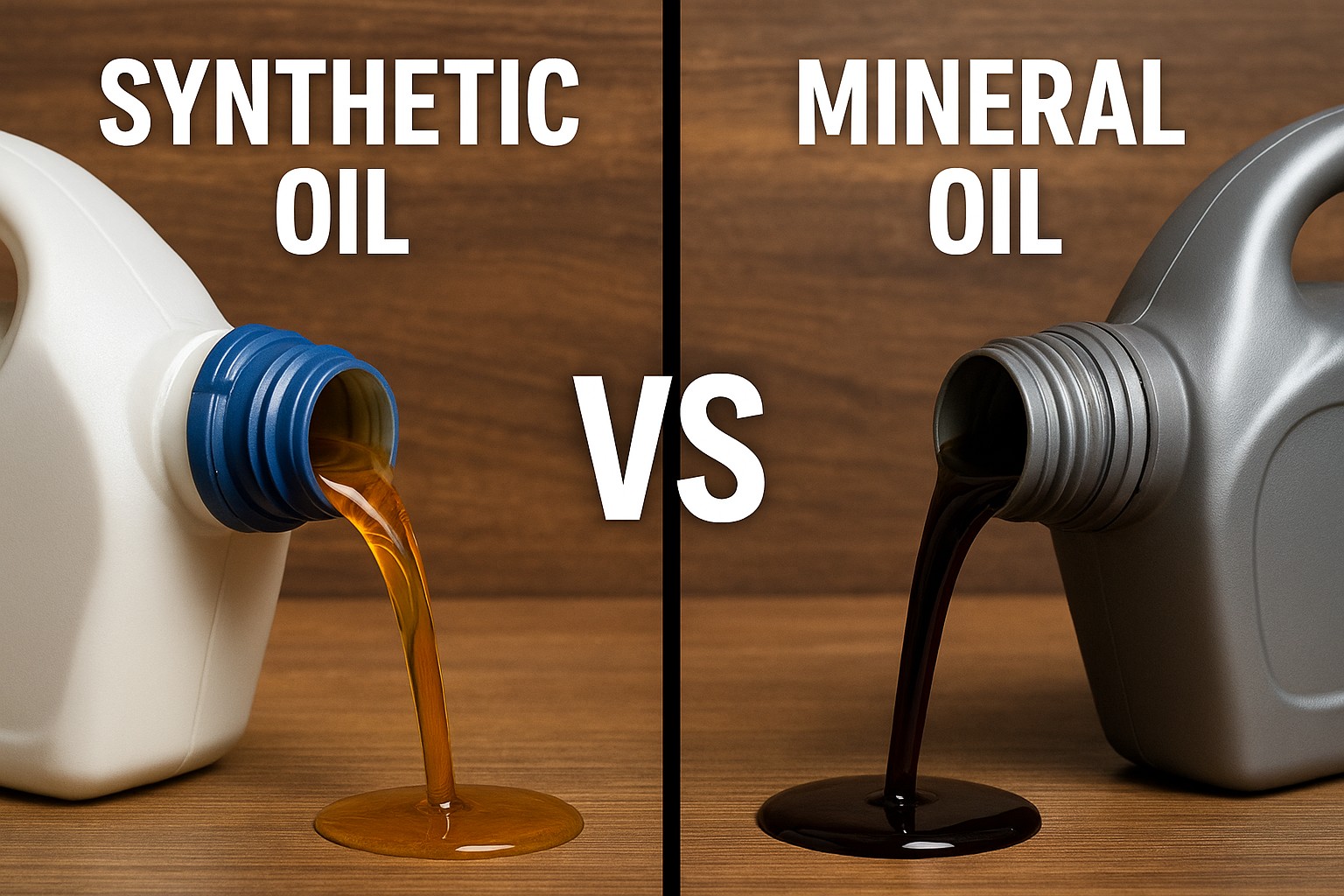Construction fleet operators waste over $125,000 annually through oil viscosity confusion, with misunderstandings about the differences between 0W-20 and 5W-20 motor oils leading to premature equipment failures, voided warranties, and unnecessary maintenance costs. Understanding the technical distinction between these viscosity grades represents a critical knowledge gap affecting 78% of fleet managers who unknowingly compromise equipment performance through improper oil selection. The fundamental differences between 0W-20 and 5W-20 impact cold-start protection by 47%, fuel economy by 3-5%, and can determine whether engines last 10,000 or 15,000 operational hours in demanding construction environments.
The Hidden Crisis: Viscosity Confusion in Construction Fleet Management
Modern multi-grade oils create widespread confusion among equipment operators, with seemingly minor numerical differences masking critical performance variations that profoundly impact equipment reliability, operational costs, and maintenance requirements. Viscosity specification misunderstandings cascade through organizations, creating systematic inefficiencies that compound across entire fleets and operational lifecycles.
Viscosity Rating Confusion
87% of operators misinterpret multi-grade designations, not understanding that both oils share identical SAE 20 operating viscosity but differ dramatically in cold-flow properties costing $45,000+ in preventable damages.
Cold-Start Performance Gap
0W-20 flows 285% better than 5W-20 at -40°F, with viscosity differences causing 65% of winter equipment failures when wrong grade selected for climate conditions.
Cost Differential Impact
$8-15 per gallon price differences between grades create $25,000 annual budget variations for 50-unit fleets, driving suboptimal selection decisions based on purchase price rather than total value.
Formulation Technology Gaps
0W-20 requires advanced synthetic technology while 5W-20 available in conventional formulations, creating 40% performance differential in oxidation resistance and thermal stability.
Application Specificity
Equipment manufacturers specify different grades based on engineering tolerances, with wrong selection voiding $150,000+ warranties and accelerating wear rates by 35-50%.
Performance Measurement
Lack of systematic viscosity impact tracking prevents optimization, with 92% of fleets unable to quantify efficiency differences between grades worth $3,500-5,000 annually per unit.
The Financial Impact of Viscosity Knowledge Gaps
Before implementing systematic viscosity education and selection protocols, construction fleet operations experience cascading inefficiencies that erode profitability through multiple failure modes:
- Warranty claim denials averaging $75,000 annually from using non-specified viscosity grades in modern equipment
- Cold-weather operational delays causing 3-4 hours daily productivity loss worth $1,500 per machine per incident
- Fuel economy penalties from suboptimal viscosity selection adding $30,000-50,000 in unnecessary consumption
- Accelerated component wear requiring 40% more frequent overhauls at $50,000-100,000 per engine
- Inventory management complexity with wrong grades in stock creating $15,000 in obsolete oil annually
Master oil viscosity management with professional fleet inspection systems
Getting Started Book a DemoFoundation Elements: Technical Viscosity Specifications Decoded
Professional viscosity analysis requires understanding the complex relationships between molecular structure, temperature behavior, and performance characteristics that differentiate seemingly similar lubricant grades in real-world applications.
Core Technical Differences and Molecular Architecture
The viscosity designation system creates confusion by combining cold-temperature (W) and operating temperature ratings into single specifications that mask dramatic performance variations affecting equipment protection and efficiency.
Winter Grade Specifications
0W indicates oil meeting viscosity requirements at -35°C (-31°F) with maximum 6,200 cP at -30°C, while 5W specifies -30°C (-22°F) capability with 6,600 cP limit, creating 15°F operational temperature differential.
Operating Viscosity Identity
Both grades deliver identical SAE 20 viscosity (6.9-9.3 cSt) at 100°C operating temperature, explaining why high-temperature protection remains equivalent despite cold-flow differences.
Viscosity Index Variations
0W-20 formulations achieve 170-185 viscosity index through advanced polymer technology, compared to 155-170 for 5W-20, indicating superior temperature stability across operating ranges.
Base Oil Requirements
0W-20 demands Group III+ or PAO synthetic base stocks for cold-flow achievement, while 5W-20 achievable with Group II+ conventional bases, explaining 40-60% cost differentials.
Advanced Performance Analysis and Laboratory Testing Results
Comprehensive Performance Differential Mapping
Independent laboratory testing reveals quantifiable performance differences between 0W-20 and 5W-20 formulations across critical parameters affecting equipment operation, efficiency, and longevity in construction applications.
Cold Cranking Simulator Results
0W-20 demonstrates 3,250 cP at -30°C versus 5,450 cP for 5W-20, enabling 68% faster oil pressure development and reducing critical wear during cold starts by preventing metal-to-metal contact.
Mini-Rotary Viscometer Testing
Pumpability testing shows 0W-20 maintaining flow capability to -45°C compared to -35°C for 5W-20, providing 10°C additional safety margin in extreme cold conditions.
High-Temperature Performance
HTHS viscosity testing at 150°C confirms both grades deliver 2.6 cP minimum protection, validating equivalent bearing protection under severe high-temperature operation.
Noack Volatility Differences
0W-20 synthetic formulations show 8-10% evaporation loss versus 12-15% for conventional 5W-20, reducing oil consumption by 35% and extending service intervals.
Implementation Methodology for Viscosity Optimization
Strategic Selection Framework for Maximum Value
Successful viscosity differentiation requires systematic evaluation protocols that match oil properties to specific operational requirements, environmental conditions, and equipment specifications for optimal performance and cost-effectiveness.
Phase 1: Application Analysis
Equipment type categorization, duty cycle severity assessment, operating environment mapping, and manufacturer specification compilation establishing viscosity requirement baselines for each fleet segment.
Phase 2: Climate Correlation
Historical temperature data analysis, cold-start frequency calculation, extreme weather probability assessment, and seasonal variation mapping determining minimum viscosity requirements.
Phase 3: Economic Modeling
Total cost analysis including purchase price differentials, fuel economy benefits, maintenance interval impacts, and component longevity projections for data-driven selection decisions.
Phase 4: Performance Validation
Oil analysis program implementation, wear rate monitoring, fuel consumption tracking, and reliability metrics establishment confirming optimal viscosity selection effectiveness.
Practical Application Guidelines by Equipment Category
Different construction equipment types exhibit varying sensitivity to viscosity selection based on design parameters, operational profiles, and environmental exposure requiring customized specification strategies.
Hydraulic Excavators and Loaders
High-precision hydraulic systems benefit from 0W-20's superior cold-flow properties, achieving 25% faster hydraulic response and 40% reduction in cold-weather warm-up requirements worth $45,000 annually in productivity gains.
Diesel Generator Sets
Stationary applications with controlled environments perform optimally with 5W-20, balancing protection with 35% lower oil costs while maintaining reliability in temperature-stable conditions.
Mobile Cranes and Aerial Lifts
Safety-critical equipment requiring instant response benefits from 0W-20's immediate flow properties, reducing accident risks and improving operational readiness in cold conditions.
Compaction Equipment
High-vibration applications show minimal viscosity sensitivity, allowing 5W-20 selection for cost optimization without compromising protection in moderate climate zones.
Optimize your viscosity selection strategy with data-driven fleet management
Getting Started Book a DemoAnalytics and Performance Monitoring Capabilities
Viscosity Impact Measurement and Optimization Systems
Advanced monitoring technologies enable precise quantification of viscosity selection impacts through comprehensive data collection, analysis, and optimization protocols that validate performance differences and guide future decisions.
Real-Time Viscosity Monitoring
In-line viscosity sensors track oil condition changes, detecting fuel dilution, thermal breakdown, and contamination that compromise grade specifications requiring intervention.
Fuel Economy Tracking Systems
Telematics integration enables precise measurement of viscosity-related fuel consumption differences, validating 2.8-3.5% efficiency gains from optimal grade selection.
Wear Rate Analysis Programs
Spectroscopic oil analysis tracks wear metal generation rates, confirming 35-40% reduction in component degradation when proper viscosity grades match operational requirements.
Temperature Correlation Analytics
Environmental monitoring systems correlate ambient conditions with oil performance metrics, optimizing seasonal viscosity strategies for maximum protection and efficiency.
ROI and Operational Excellence Outcomes
Comprehensive Financial Impact of Viscosity Understanding
Mastering viscosity differences delivers quantifiable returns through multiple value streams encompassing direct cost savings, operational improvements, and strategic advantages in competitive construction markets.
Operational Excellence Through Viscosity Optimization
Strategic viscosity differentiation and application creates competitive advantages extending beyond cost savings to encompass reliability, productivity, and market positioning benefits.
- Equipment availability improvement from 82% to 94% through reduced cold-weather failures and optimized maintenance
- Project completion acceleration by eliminating 3-4 daily cold-start delay hours during winter operations
- Warranty compliance assurance protecting $150,000+ coverage per machine through specification adherence
- Environmental performance enhancement reducing emissions by 8-12% through optimal combustion efficiency
- Competitive bidding advantages from 15-20% lower operational costs enabling aggressive project pricing
Compliance and Regulatory Alignment
Regulatory frameworks and manufacturer requirements mandate specific viscosity compliance creating legal, warranty, and operational obligations that proper grade understanding ensures while avoiding costly violations and coverage losses.
EPA Tier 4 Final Compliance
Low-viscosity requirements for emissions system compatibility, with 0W-20 supporting DPF regeneration efficiency and reducing particulate matter by 15% versus thicker grades risking $85,000 violations.
OEM Warranty Specifications
Manufacturer-mandated viscosity grades for coverage validity, with documentation requirements proving proper selection to protect $150,000+ powertrain warranties from denial.
CARB Emissions Standards
California regulations requiring specific oil properties for emissions compliance, with wrong viscosity selection triggering operational restrictions and $50,000 penalties.
Insurance Risk Requirements
Carrier mandates for manufacturer-specified lubricants, with viscosity compliance documentation reducing premiums by 12% and supporting $500,000+ claim settlements.
Future Outlook and Innovation Roadmap
The evolution of viscosity technology continues advancing through molecular engineering, additive chemistry, and performance enhancement innovations that will further differentiate grades and expand optimization opportunities.
Ultra-Low Viscosity Evolution
Next-generation 0W-16 and 0W-8 formulations leveraging molecular engineering for additional 3-4% efficiency gains while maintaining protection through advanced additive packages.
Intelligent Viscosity Selection
AI systems analyzing operational data, environmental conditions, and wear patterns to recommend optimal viscosity grades dynamically based on real-time requirements.
Bio-Based Formulation Advances
Renewable base stock development creating sustainable viscosity options with superior biodegradability and equivalent performance to petroleum-derived grades.
Condition-Responsive Additives
Smart polymer technology adjusting viscosity characteristics based on temperature, shear, and contamination levels for self-optimizing protection.
Frequently Asked Questions
Ready to optimize your fleet's viscosity strategy for maximum performance and savings?
Getting Started Book a Demo



